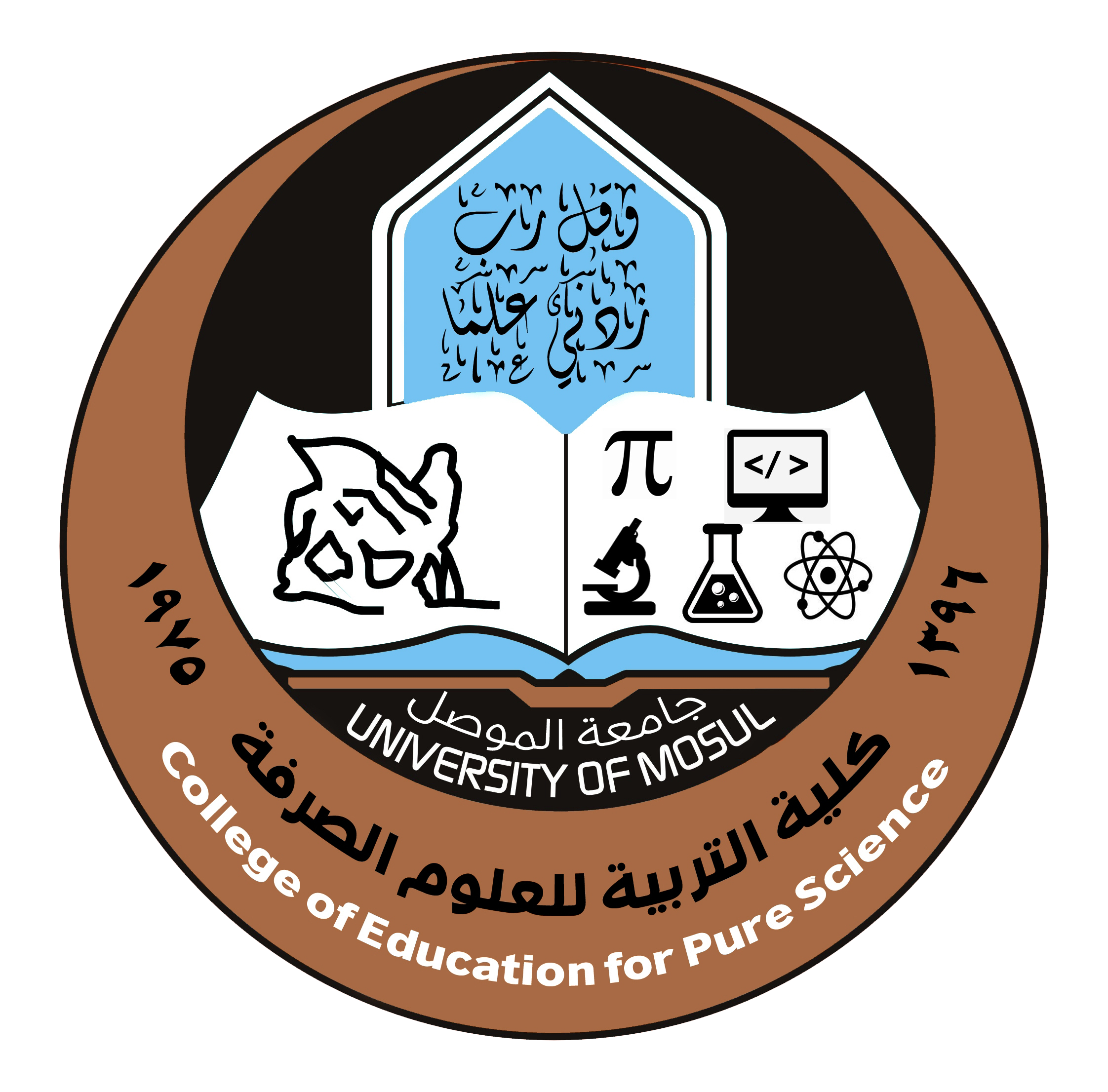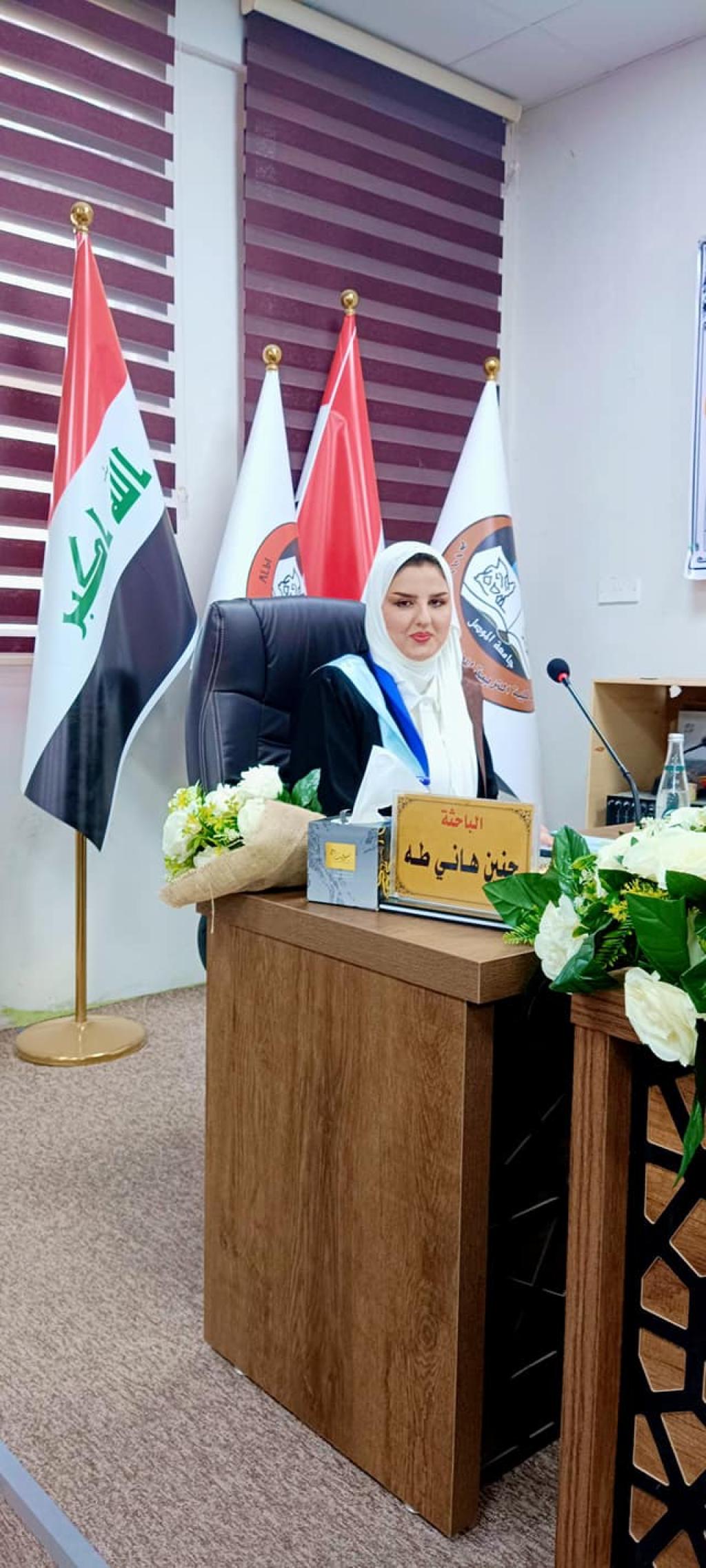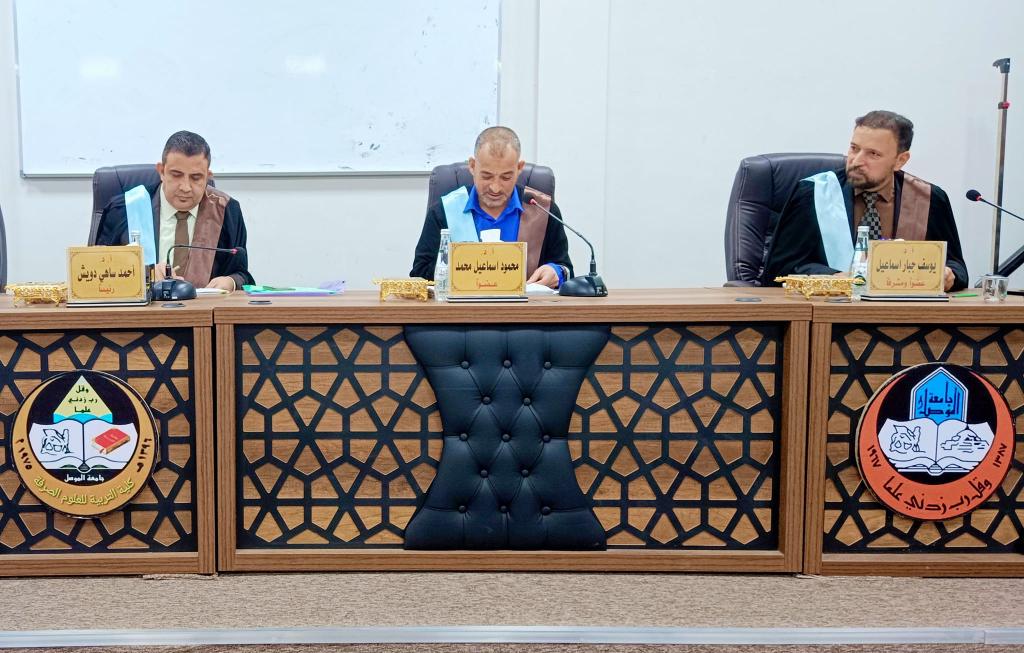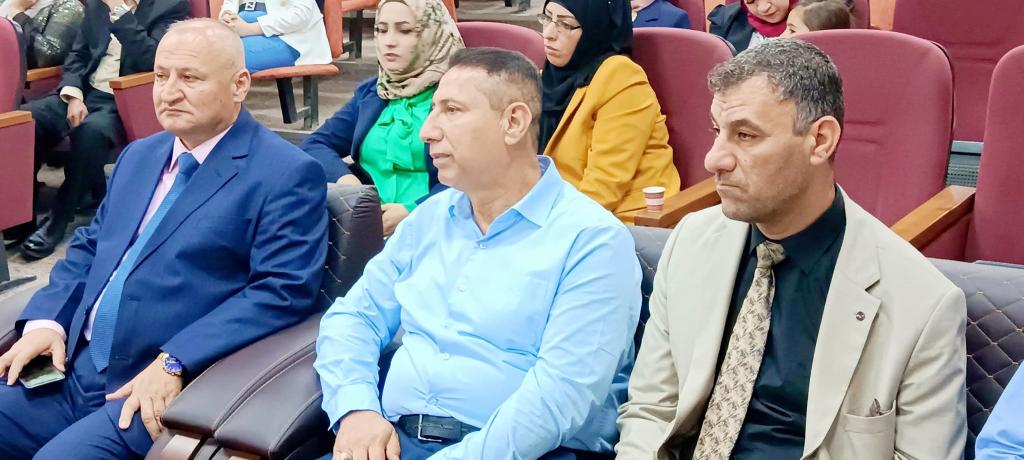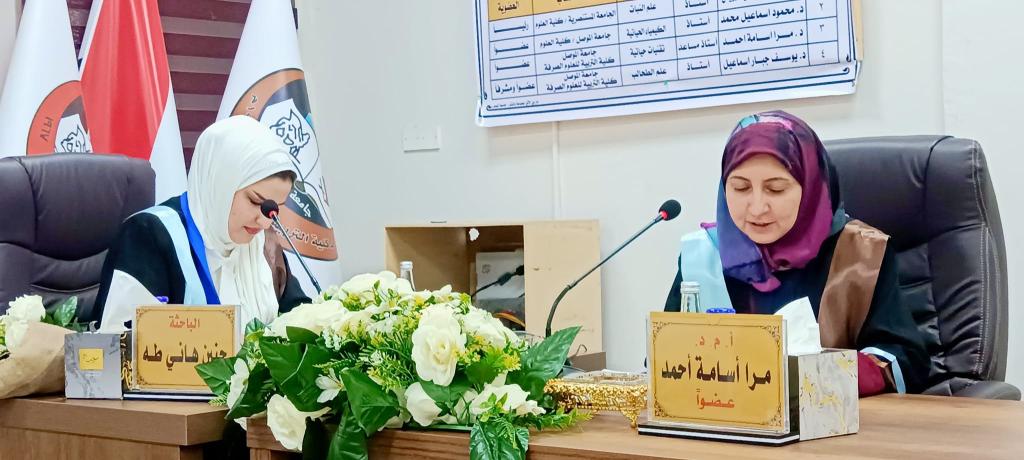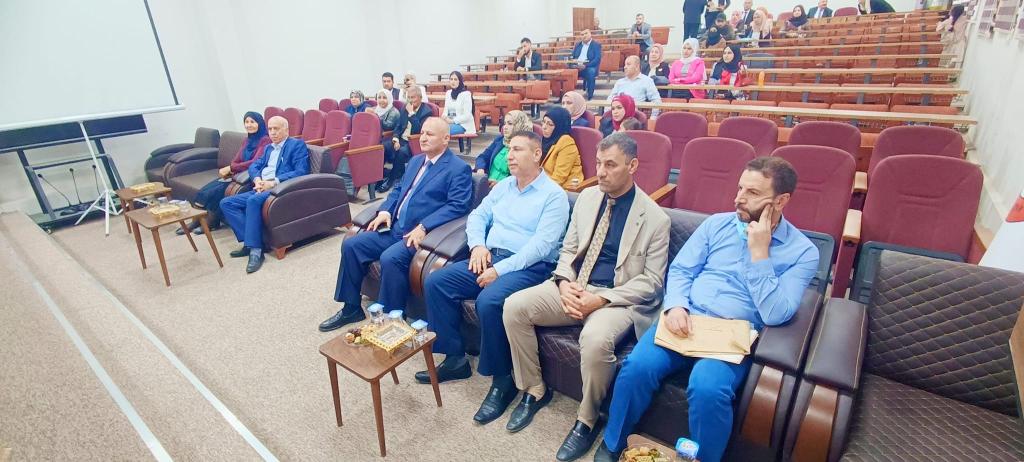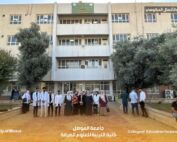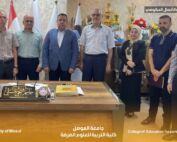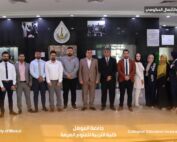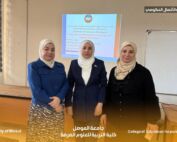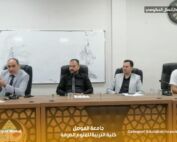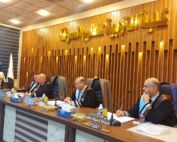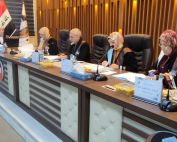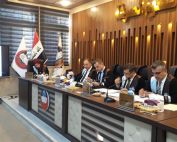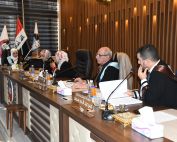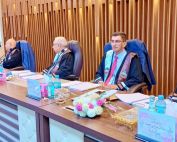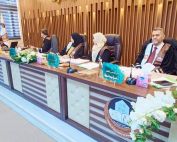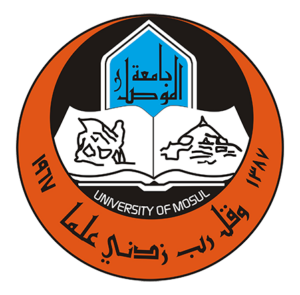30 October، 2022
Master Thesis Viva-Biology Department
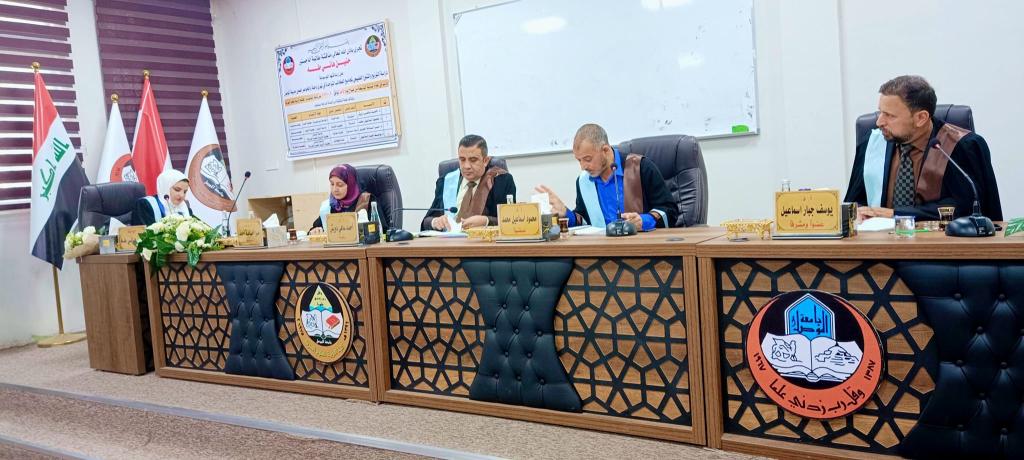
Master Thesis Viva in the College of Education for Pure Science entitled ” A study of the distribution and natural diversity of the algal groups present in the Tigris and Al-Khawser rivers within the city of Mosul “The College of Education for Pure Science, University of Mosul, has done the Master Thesis Viva entitled ” A study of the distribution and natural diversity of the algal groups present in the Tigris and Al-Khawser rivers within the city of Mosul “,On Sunday, October 30, 2022, the respected Dean of the College, Assistant Professor Dr. Qais Ismail Ibrahim, the Honorable Scientific Associate and Administrative Associate, the Honorable Head of the Department of Biology, and a number of the college’s teachers were attended the viva. The current study, presented by the M.Sc. Student Haneen Hani Taha Al-Taee in the Department of Biology, was conducted in the laboratories of the Research Unit of the College of Education for Pure Sciences and in the central laboratory of the College of Agriculture and Forestry / University of Mosul, which witnessed conducting field research to study the physical and chemical properties of water, in addition to conducting a diagnosis of algae types, their identification, and their numbers located in different areas within the city of Mosul. Four site were chosen. Different ecological sites. The study began in August of the year (2021) until May of the year (2022). The results showed that the air temperatures of the study areas in the city of Mosul ranged between (10-40) degrees Celsius during the months of December and August respectively, while the water temperatures reached (5-33) degrees Celsius during the months of January and November, respectively. And the electrical conductivity values were high during the summer (2340) micro-siemens/cm and low during the winter (330) micro-siemens/cm. It was noticed that the electrical conduction values of the Al-Khusser River stations in general compared to the electrical conduction values of the Tigris River stations. The results showed an increase in the values of dissolved oxygen at the Badush Dam station, which reached (9.95) mg/liter in April, while the lowest value was (0.00) mg/liter in August and September at Hay al-Zohour station. As for the vital oxygen requirement, it was noted that the values were high in summer and decreased in winter (33-30-1.00) mg/L during the months of September and March, respectively. The pH in the studied stations ranged between (7.28-8.20). As for the total hardness and calcium and magnesium hardness, the highest values were (632-342-301) mg/l during the winter and spring months for total hardness and calcium and magnesium hardness, respectively, while the lowest values were recorded during the summer and reached (209-130-47) mg/l for total hardness and calcium and magnesium hardness, respectively. The rest of the water samples were subjected to chemical tests such as (total alkalinity, chlorides, sulfates, phosphates and nitrates). The biological aspect of the study included calculating the number of algal plankton in the studied stations, and diatoms constituted the vast majority of the types of phytoplankton present in the waters of the city of Mosul. The most prominent genera of diatoms are: Nitizschia، Navicula، Cymbella، Fragilaria، Cyclotella، Melosira، Cocconie، The Oscillatorin genus is a blue-green algae. The Englena genus was observed in the flower water station, and this gender was not significantly observed in the other studied stations. The stations were generally characterized by the presence of a clear peak in the number of algae during the spring, where the stations of the Al-Khawser River showed a high number of algae compared to the stations of the Tigris River. The number of phytoplankton in the water of the Al-Khawser River reached (169280-189380) cells / liter for the two stations of Al-Shallalat and the Al-Zohour neighborhood, while the waters of the Tigris River reached (176500-205040) cells / liter for the stations of Badush Dam and Al-Ghabaat, respectively. (103) taxonomic units distributed over six sections of algae were identified during this study in the studied stations distributed over (16) orders and (54) genus. Algae diagnosed in the waters of the Tigris River accounted for 35.9-33% for the stations of Badush Dam and Al-Ghagabat, respectively. Also, in the study, several environmental indices were used, represented by Palmer’s index, Marcliff’s richness index (1968) and Sorenson’s (1942) index Bray and Curtise index (1957) of similarity to assess the relationship between the studied ecological sites and the quality of algae and its relationship to water quality. The Viva committee was chaired by Prof. Dr. Ahmed Sahi Darwish, Al-Mustansiriya Univ. / College of Science and the membership of Prof. Dr. Mahmoud Ismail Muhammad, University of Mosul / College of Science,, Assist. Prof. Dr. Mira Osama Ahmed/ University of Mosul / College of Education for Pure Science and under the supervision and membership of Prof. Dr. Youssef Jabbar Ismail / University of Mosul / College of Education for Pure Science.
